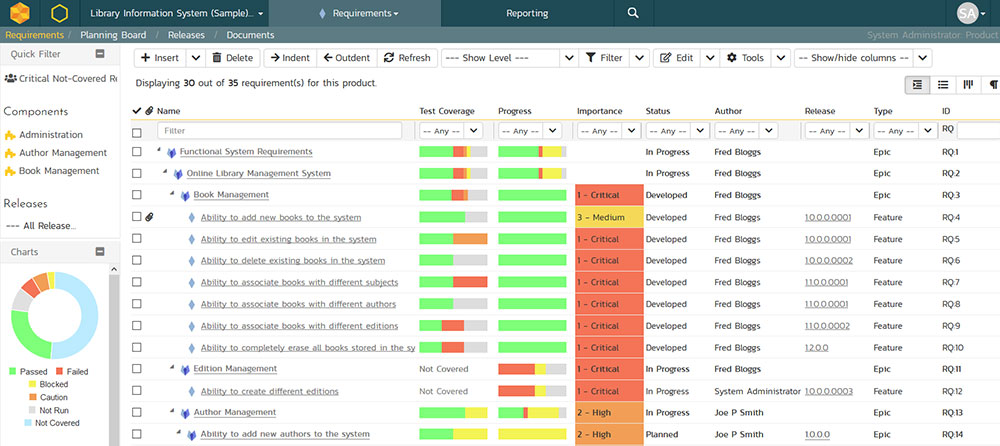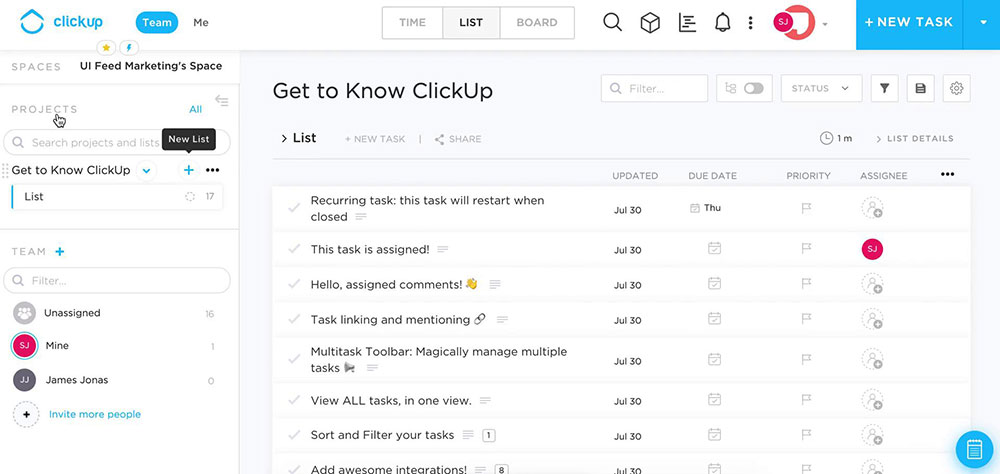When you’re diving into a project, you’ve got to have some way to measure how things are going, right? Enter project management metrics. These little guys are essential for keeping a project on track and ensuring success. Let me break it down for you.
Project management metrics are like the heartbeat of a project. They tell you how healthy it is and what parts might need a little extra love.
- Role in project success: Imagine trying to bake without measuring the ingredients. Crazy, right? It’s the same with managing projects. These metrics are our measuring cups. They’re the difference between a flop and a showstopper. They’re all about performance measurement and keeping things in check.
- Importance of regular checks and analysis: You wouldn’t ignore a weird noise coming from your car, right? Similarly, regular check-ups with these metrics ensure we catch issues early and fix ’em before they get worse. It’s all about project evaluation and taking action based on what the metrics tell us.
Key takeaways
- Choosing the Right Metrics: It’s crucial to select metrics that align with the project’s scope and success factors. These metrics act as standards to gauge performance and ensure that projects move with purpose towards their goals
- Time Management Metrics: Time-based metrics are vital as they help track a project’s progress against its schedule. Key time-based KPIs include cycle time, on-time completion, and the comparison of forecasted versus actual time
- Budget Management: Staying within budget is essential for project success. Budget Variance, Cost Performance Index (CPI), and Line Items are key financial KPIs that track spending and ensure value for money
- Quality and Effective Delivery: Quality metrics ensure that deliverables meet client expectations and contribute to customer retention and loyalty. Effective delivery involves clear communication and matching resources to projects for efficient execution
- Project Closure Analysis: Post-project reflection is invaluable. Lessons learned and feedback are used for continual improvement, ensuring that each project contributes to the growth and evolution of the team and the organization
The Need for Project Management Metrics
Proving Value and Improving Performance
Alright, so we’ve established that these metrics are cool. But why exactly are they so crucial?
- Metrics as a guiding light: Navigating a project without metrics is like trying to find your way in the dark with no flashlight. They light the path, showing us where to go, what’s working, and what’s not. It’s a form of project monitoring, keeping everyone aligned and pushing towards that big goal.
- Metrics as a warning system and project backbone: You know that feeling when you sense something’s off? That’s what these metrics do. They raise a red flag when things aren’t going as planned, giving us a chance to step in and steer things right. They’re the backbone, the foundation – everything stands strong because of them.
Key Components of Effective Metrics

Alright, let’s get into the nitty-gritty. We’ve talked about why we need these metrics. Now let’s delve into how we make sure they’re top-notch.
Choosing the Right Metrics
Not all metrics are made equal. Picking the right ones is like choosing the right tool for the job. Here’s how we nail it:
- Determining project scope: It’s like understanding the playground we’re in. What’s the size? What are we trying to achieve? This helps in making sure we’re not just running around like headless chickens but moving with purpose.
- Identifying success factors: These are the big wins we’re aiming for. Maybe it’s completing a project under budget or getting it done ahead of schedule. It’s about understanding what ‘good’ looks like.
- Establishing fulfillment measurements: This is the “proof in the pudding”. It’s about setting clear standards. Like, if our project was a pizza, what toppings would we need to make it a hit?
Engineering Project Metrics
Now, once we’ve picked our metrics, it’s time to polish them to perfection.
- Setting suitable targets: You wouldn’t aim to climb Mount Everest if you’ve never hiked before, right? Similarly, we set goals that are challenging yet achievable. Stretch, but don’t snap.
- Implementing the “SMART” and “SMARTER” framework: Sounds fancy, huh? But trust me, it’s straightforward. It’s like giving our metrics a workout regime to make sure they’re fit and robust. With this, they are Specific, Measurable, Achievable, Relevant, and Time-bound. And for those feeling extra, the ER stands for Evaluated and Reviewed. Pure gold.
Fundamental Factors Determining Project Success
Alright, let’s deep dive into the real juice of project management metrics. If a project was a movie, these factors would be the main characters. And guess what? They’re all interconnected, like besties from a sitcom!
Time Management
Ever felt like there’s never enough time in a day? Especially when you’ve got that super cool project to deliver. That’s where time-based metrics come in.
- Importance of time-based metrics: Time’s ticking, always. And in projects, every second counts. If we miss a beat, we might miss the whole dance. By measuring time, we get a grip on what’s happening when and can jive to the project rhythm.
- KPIs – The Big Players:
- Cycle time: Think of it like baking a cake. How long does it take from mixing the batter to taking it out of the oven? That’s cycle time.
- On-time completion: Did we get the cake out before the timer buzzed? This tells us that.
- Forecast vs. actual time: So, did we think the cake would take 30 minutes but took an hour? That’s this guy right here.
Budget Management
Money talks, right? Especially when we’re trying to make things happen. Let’s see how our budget plays its part.
- Importance of staying within budget: It’s simple. We’ve got to keep the project pocket happy. If we overspend, we might not have enough to see it through. So, these project evaluation metrics help us be the boss of our budget.
- KPIs – The Money Makers:
- Budget Variance: Are we spending more or less than planned? This KPI’s like a financial compass.
- CPI (Cost Performance Index): It’s like a financial health check-up, telling us if we’re getting value for our money.
- Line Items: Think of these as the little things that add up. Like when you’re shopping online and keep adding to the cart. Yep, every little counts.
Quality of Delivery
Remember ordering something online and it being totally different when it arrived? Quality matters. Let’s get into the deets.
- Meeting client expectations: Imagine ordering a pepperoni pizza and getting one without pepperoni. Bummer, right? We need to deliver what we promise. That’s where these metrics guide us.
- KPIs – The Quality Checkers:
- Customer retention/loyalty: Are clients coming back for more from your customer service provider? This KPI’s our feedback form.
- NPS (Net Promoter Score): Would clients recommend us? If they do, we have a good NPS.
- Calculation of errors: Oops! Made a mistake? This KPI keeps a tally.
- Earned Value: This is big. It’s about getting bang for your buck, making sure every penny is well spent.
Effective Delivery
Let’s talk about making things happen, but like, efficiently.
- Clear communication and task dependencies: Like in any relationship, communication is key. We gotta know who’s doing what and when. It’s the choreography behind the project dance.
- KPIs – The Efficiency Gurus:
- Clearly defined project requirements: Setting the stage right from the start. What’s the plan?
- Effective communication: Making sure everyone’s singing from the same song sheet.
- Matching resources to projects: Think of it like puzzle pieces. Everything’s got to fit just right.
Project Closure Analysis
The end of the road, but not really. Here’s why.
- Analyzing lessons learned: Ever heard of “Hindsight is 20/20”? At the end of a project, we take a moment to look back. What went well? What could’ve been better? This reflection is pure gold.
- Importance of feedback and continual improvement: Feedback isn’t just about patting ourselves on the back. It’s also about growing, evolving, and rocking even harder next time.
Diverse Types of Project Management Metrics
Alright, let’s imagine we’re prepping for a big potluck dinner. We’ve got different dishes coming in (yum!), but instead of food, we’re serving up project management metrics. Let’s see what’s on the menu!
Productivity Metrics
Ever had that awesome feeling when you’ve crossed out everything on your to-do list? That’s productivity. And we’ve got metrics for that!
- Output vs. Input: Think of it like baking cookies. How many did you plan to make, and how many did you actually end up with? Did you manage to bake 50 cookies from that dough, or just 40?
- Tasks Completed: It’s like the ingredients list. Did we get everything we needed for our recipe?
Financial Metrics
Money makes the world go round. And these metrics? They keep track of where the money’s spinning.
- Gross Profit Margin: This one’s like checking if the expensive chocolate we bought for the dessert was worth it. Are we getting the value we wanted?
- ROI (Return on Investment): If we spent a bunch on that fancy dinner set, is it making our potluck look classier? It’s all about returns, baby!
Customer and Employee Satisfaction Metrics
Ever seen those smiley and sad face buttons at store exits? That’s feedback, and it’s precious. We need to know if people loved the cheesecake or if it was just ‘meh’.
- Feedback Surveys: Handing out comment cards after the potluck. What did everyone think?
- Employee Engagement Levels: Were the chefs happy making the food? Happy chefs mean yummier dishes!
Cost Metrics
Let’s talk moolah again but from a different angle.
- Actual Cost: Like, how much did we really spend on that potluck? Those organic veggies, the drinks, the decorations…
- Cost Variance: So we set aside some cash for the party. Did we overspend? Or did we save some bucks?
- Cost Performance: It’s kinda like comparing the potluck with a restaurant. Did we get value for our money?
FAQ On Project Management Metrics
What exactly are project management metrics?
Project management metrics? Think of them as the thermometer and compass for your project. They give you readings, like “Hey, we’re a tad over budget,” or “Whoa, we’re finishing tasks way ahead of schedule!” These measurements are like checkpoints, guiding the team and showing areas of improvement.
Trust me, they’re the secret sauce in understanding how well your project is doing.
Why are these metrics so darn important?
Imagine baking a cake without checking the temperature or timing. You’d end up with a hot mess. Metrics in project management are somewhat the same. They give the real-time pulse of your project.
If something’s off, these numbers will scream, “Look here!” They’re crucial for ensuring the project stays on track. Without them? You’re sailing a ship with no compass.
How do I choose the right metrics for my project?
Picking metrics is like setting up a playlist for a road trip. You’ve got to match the vibe. Consider the project scope, the goals, and what you want to achieve. Also, remember the success factors.
If it’s a short-term project, maybe you’re more interested in speed. Long-term? Quality might be the focal point. Listen to the rhythm of the project and choose accordingly.
Can I have too many metrics?
Absolutely! It’s like having too many cooks in the kitchen. If you’re tracking everything, soon you’ll lose sight of what’s essential. It’s about quality, not quantity.
It’s better to focus on a few critical metrics, the ones that genuinely paint a picture of your project’s health. Otherwise, you’ll drown in data and miss the story it’s trying to tell.
What’s the deal with KPIs and metrics?
KPIs, or Key Performance Indicators, are a subset of metrics. Think of them as the headliners at a music fest, while the other metrics are the opening acts. KPIs are the big-deal numbers, the ones that can make or break a project.
They are the primary indicators of success. If you’re hitting your KPIs, you’re rocking the project.
Are metrics just for big projects?
Nah, it’s a common misconception, though. Even if you’re planning a weekend camping trip with friends, you’ve got metrics. How many tents? Food for how many days? Big or small, any project can benefit from metrics. They provide clarity, whether you’re launching a rocket or baking a batch of cookies.
How often should I check these metrics?
This one’s tricky. Checking too often is like opening the oven door every minute when baking – you’ll mess up the process. But wait too long, and you could miss potential issues. Ideally, schedule regular analysis sessions, depending on the project’s pace. Weekly, bi-weekly, or even daily if it’s super fast-paced.
Do I need fancy tools for tracking these metrics?
While there’s a ton of sophisticated project tracking tools out there, you don’t necessarily need the fanciest gizmo. Even a well-maintained spreadsheet can do the trick for simpler projects.
The tool isn’t the star here; it’s how you use it. But if you’ve got complex projects with tons of data points, investing in a dedicated tool might be a good call.
Can metrics predict the future success of my project?
In a way, yeah. They’re like the weather forecast. While they can’t tell you it’ll rain at 3:15 pm next Tuesday, they give you a general idea. If the metrics show consistent delays or budget overruns, it’s a hint of stormy weather ahead.
They provide trends and patterns, which can be a decent gauge for future performance.
What if my metrics are all showing negative trends?
Take a deep breath. It’s not the end of the world. Negative trends in metrics are like alarm bells. They’re saying, “Hey, pay attention here!” Instead of panicking, use this as an opportunity.
Dive deep, find the root causes, and make necessary adjustments. Remember, every project has its bumps. Metrics help you see them so you can navigate around.
Conclusion On Project Management Metrics
What a journey we’ve had diving into project management metrics. Imagine you’re binge-watching your favorite series, and we’ve just reached the season finale. Let’s wrap it all up and spill the tea on what we’ve learned.
Alright, so you remember those times when your favorite streaming site lags and you’re stuck staring at the loading screen? That’s a bottleneck. But instead of video streaming, we’re talking projects. It’s like getting stuck in a traffic jam when you’re already late for a party.
- Detecting the Jam: Metrics are like those traffic updates on your GPS. They show us where the hold-ups are. “Oops! There’s a delay in this project phase.”
- Rerouting: Once we know where the problem is, we can find a detour. Maybe reassign tasks or bring in some extra hands on deck.
- Smooth Sailing: The goal? No more jams! With the right metrics, we’re cruising on the highway, wind in our hair, and our favorite song blasting on the radio.
Time for some crystal ball gazing! What’s the future got in store for our trusty project management metrics?
- Techy Stuff on the Horizon: With all the cool tech popping up, think AI, machine learning, and all that jazz, our metrics are bound to get a makeover. Picture a self-adjusting roadmap, tweaking itself as the project rolls.
- Personalization: It’s not one size fits all. Just as you choose toppings for your pizza, soon you might be able to tailor-make metrics for your project’s unique flavor.
- Learning from Mistakes: Mistakes happen (like burning cookies), but they’re also opportunities. As metrics evolve, they’ll also get better at helping teams bounce back faster from slip-ups.
If you enjoyed reading this article on project management metrics, you should check out this one about project management framework.
We also wrote about a few related subjects like IT project manager, project management goals, project management principles, project management books, what is a war room, Kanban app, gap analysis, project management skills and project management methodologies.
- Optimizing Your Shopify Store for Maximum Dropshipping Success - April 26, 2024
- Python Explained: What is Python Used For? - April 26, 2024
- Reasons Why You Need a Reliable Host for Your Website - April 26, 2024









